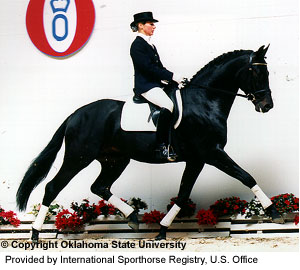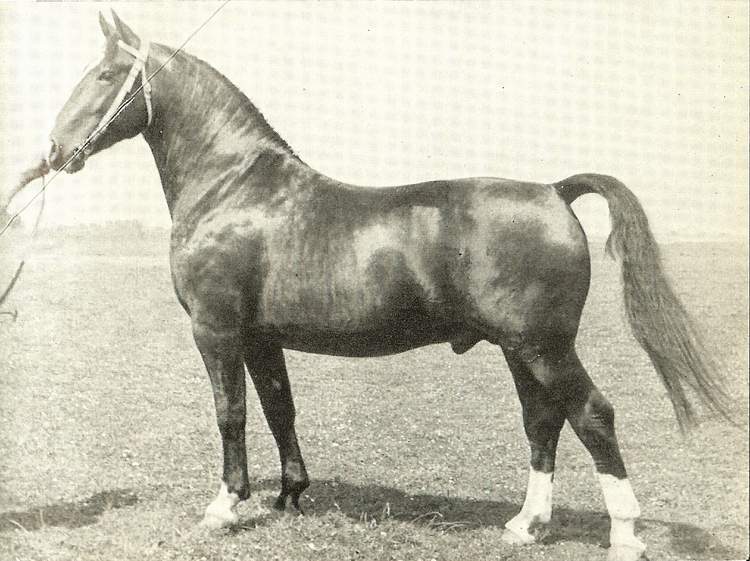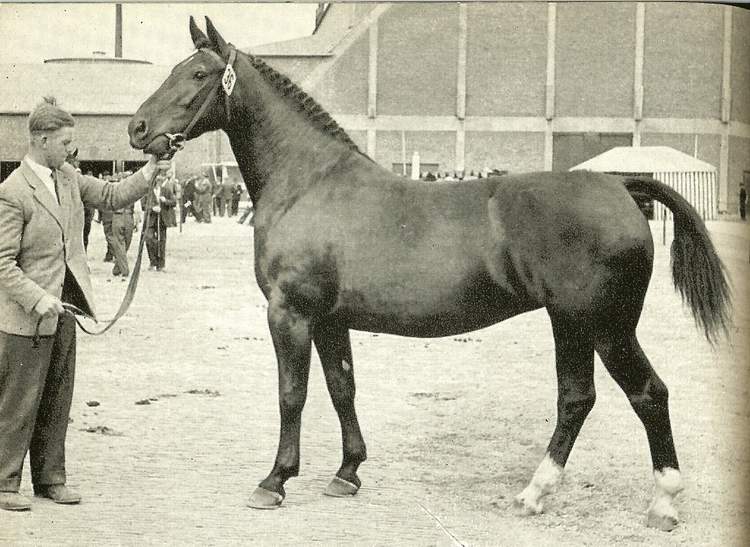

Oldenburger


Introduction: If you have any comments or suggestions, please click here. I cannot resist contrasting these two beautiful pictures--the one on the left of the modern, sport horse type Oldenburg, and the one on the right of the traditional coach horse type. Despite the fact that the Oldenburg has obviously slimmed down in recent years, I believe it is still the largest of the classic German warmbloods.
Names: Oldenburg, Oldenburger. I will use the shorter name more often.
Origin: From
northwest Germany, Oldenburg. No studs--wholly bred by farmers with
privately-owned stallions. All Oldenburgs are registered with the Oldenburger
Verband (breeders' association). Rearing areas mainly in East
Holstein, Bavaria (Rottul) and Saxony. Formerly also in Silesia. In
Denmark, on the Island of Funon.
According to one source, the Oldenburg has flourished in
northwest Germany since the 17th century, when it was used as a coach horse, and
is based on Friesian
stock crossed with lighter horses.
Breeding: The
Cleveland
Bays in the Royal Stalls (of Great Britain) have an affinity with the German Oldenburg
team purchased for the Queen in 1967. For Oldenburgs, like so many
Continental breeds, were originally upgraded with Cleveland
Bays.
Oldenburgs nearly died out after World War II, and until 1968 were not available
outside Germany, only being exported once more from 1968 onward.
First appearance of Friesian-Oldenburg breed established
under Count Anton Gunther of Oldenburg 1603-1667 with the import of Spanish and
Neapolitan stallions. Then followed a gradual recession until 1819, when
selection and awards for stallions were introduced. Then the famous Stavee
stallion (Yorkshire coach horse) was imported from England to become the founder
of the most important of the Oldenburg line of sires. The breed has also
benefited from the addition of Thoroughbred
and Cleveland
Bay blood. (Another source stated, "It
is said that the introduction of English Thoroughbred blood during recent years
did not improve the breed." Being a great fan of the old, pure European
types, before they were heavily influenced by Arabian and Thoroughbred
influence, I tend to agree more with this latter than with the idea that the
Oldenburg was heavily benefited by it. I do think the Cleveland Bay was
probably the most important influence.)
Description: Strong, muscular build; in all, markedly rotund and stocky shape. A German horse of medium-heavy build, standing on the average 64.5 inches and weight 1399 pounds. In build it is thus about halfway between a Thoroughbred and an average-sized draft horse. (Again, I could not resist including another beautiful picture for use in studying the conformation--this time of an Oldenburg mare.)

Action: Long, easy walk. Energetic long trot with high action and powerful thrust from rear. Gallop, rather laborious.
Body: Heavy, broad neck set on high. Broad, deep rump, barrel-shaped ribs. Broad, straight, heavy-muscled croup. Back frequently somewhat soft. Good shoulders. Powerful and massive joints and bones.
Color: Usually gray, bay, black or brown. All over bay, brown or black. Rarely chestnut.
Head: Often Roman-nosed.
Legs: Short, strong cannons.
Size: 16.2-17.2 hands.
Temperament: Excellent, good-natured temperament.
Features: Big and strong; fairly fast. Imposing, proud bearing. Extraordinary energy as heavy-draught. Next to the East Prussian, perhaps the most homogenous German breed. Second of the present standard German thoroughbred types.
Uses: Good trotting and carriage horse. Heavy thoroughbred all-purpose horse. In its lighter blood line, an absolutely reliable riding horse (jumper). Otherwise used as strong, elegant carriage horse with plenty of nerve and nobility.
Accomplishments:
Curiosities:
Profiles:
Conclusion: